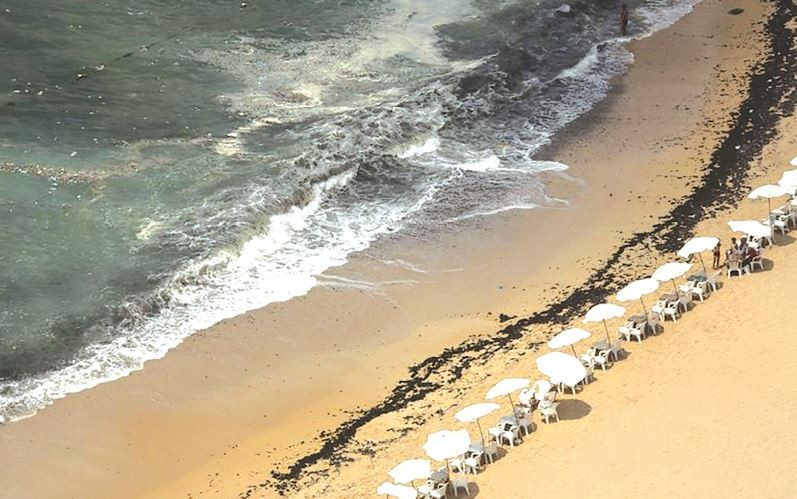Rising seas threaten Egypt's fabled city

By Samy Magdy, Egypt’s coastal city of Alexandria, which has survived invasions, fires and earthquakes since it was founded by Alexander the Great more than 2,000 years ago, now faces a new menace in the form of climate change.
Rising sea levels threaten to inundate poorer neighborhoods and archaeological sites, prompting authorities to erect concrete barriers out at sea to break the tide. A severe storm in 2015 flooded large parts of the city, causing at least six deaths and the collapse of some two dozen homes, exposing weaknesses in the local infrastructure.
Alexandria, the country’s second city, is surrounded on three sides by the Mediterranean Sea and backs up to a lake, making it uniquely susceptible to the rise in sea levels caused by global warming and the melting of the polar ice caps.
Back in the late 1940s and 1950s, it was a haven for writers and artists that drew both Egypt’s well-heeled and foreign tourists for its beauty and charm. Today, more than 60 kilometers (40 miles) of waterfront make it a prime summer destination for Egyptians, but many of its most famous beaches already show signs of erosion.
The U.N. Intergovernmental Panel on Climate Change has warned that global sea levels could rise by 0.28 to 0.98 meters (1-3 feet) by 2100, with “serious implications for coastal cities, deltas and low-lying states.”
Experts acknowledge that regional variations in sea level rise and its effects are still not well understood. But in Alexandria, a port city home to more than 5 million people and 40% of Egypt’s industrial capacity, there are already signs of change.
Egypt’s Ministry of Water Resources and Irrigation says the sea level rose by an average of 1.8 millimeters annually until 1993. Over the following two decades that rose to 2.1 millimeters a year, and since 2012 it has reached as high as 3.2 millimeters per year, enough to threaten building foundations.
The land on which Alexandria is built, along with the surrounding Nile Delta, is sinking at roughly the same rate, due in part to upstream dams that prevent the replenishment of silt and to natural gas extraction. That is expected to exacerbate the effects of the rise in sea level, with potentially catastrophic consequences.
A 2018 study predicted that up to 734 square kilometers (more than 280 square miles) of the Nile Delta could be inundated by 2050 and 2,660 square kilometers (more than 1,000 sq. miles) by the end of the century, affecting 5.7 million people.
Residents living in low-lying areas are already coping with the consequences. A 52-year-old resident of the Shatby neighborhood, who goes by Abu Randa, said he has repaired his three-story home twice since the 2015 floods.
“We know it is risky. We know that the entire area will be underwater, but we have no alternative,” he said.
In the el-Max neighborhood, hundreds of people were forced to leave their homes after severe flooding in 2015. The Housing Ministry built nine apartment blocks to house them after declaring the area unsafe.
-Associated Press
Recent News

Do not make expressions casting dout on election: EC
14 Apr, 2022
CM Bhatta says may New Year 2079 BS inspire positive thinking
14 Apr, 2022
Three new cases, 44 recoveries in 24 hours
14 Apr, 2022
689 climbers of 84 teams so far acquire permits for climbing various peaks this spring season
14 Apr, 2022
How the rising cost of living crisis is impacting Nepal
14 Apr, 2022
US military confirms an interstellar meteor collided with Earth
14 Apr, 2022
Valneva Covid vaccine approved for use in UK
14 Apr, 2022
Chair Prachanda highlights need of unity among Maoist, Communist forces
14 Apr, 2022
Ranbir Kapoor and Alia Bhatt: Bollywood toasts star couple on wedding
14 Apr, 2022
President Bhandari confers decorations (Photo Feature)
14 Apr, 2022











